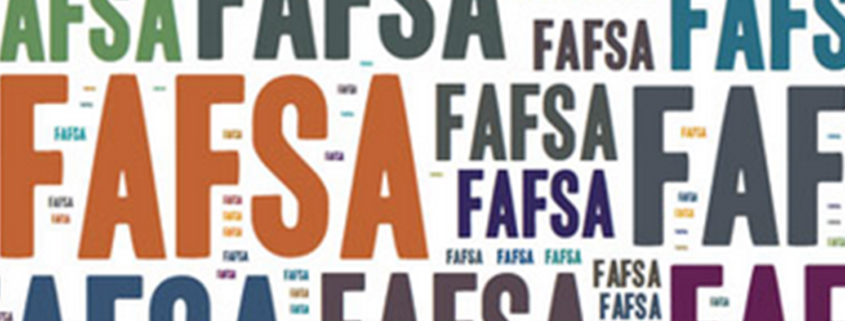Everything You Need to Know about the 2017-2018 FAFSA
For many years, the FAFSA® (Free Application for Federal Student Aid) has been available for applicants to complete on January 1 for the following school year; and the FAFSA has required income and tax information from the previous calendar year. Recent research and the U.S. Department of Education’s own data suggest that implementing an earlier start date and using earlier income and tax information may benefit students in the following ways:
- Alignment: For some students, the traditional FAFSA application cycle is not aligned with college admissions application deadlines, which typically occur in the fall prior to the FAFSA launch.
- Certainty: Many deadlines for college and state aid are as early as March. If the FAFSA asks for information about tax forms that aren’t due until April 15, applicants have to estimate income or taxes paid in order to meet those state deadlines. And unfortunately, many students and parents mistakenly think they are not able to file a FAFSA until they file their tax return. This may cause students to miss certain federal, state, and/or institutional financial aid deadlines.
What’s changing for 2017–2018?
- You’ll be able to submit your FAFSA earlier. The 2017-2018 FAFSA will now be available and you can file as early as October 1, 2016 rather than beginning on January 1, 2017. The earlier submission date will be a permanent change, enabling you to complete and submit a FAFSA as early as October 1 every year.
- You’ll use earlier income and tax information. Beginning with the 2017–2018 FAFSA, students, and their families will be required to report income and tax information from the federal tax form from two years prior. For example, on the 2017–2018 FAFSA, you—and your parent(s), as appropriate—will report your 2015 income and tax information, rather than your 2016 income and tax information.
- The chart below shows the changes when a student can submit a FAFSA and the required year’s income to be provided:
| WHEN A STUDENT IS ATTENDING COLLEGE (SCHOOL YEAR) | WHEN A STUDENT CAN SUBMIT A FAFSA | WHICH YEAR’S INCOME INFORMATION IS REQUIRED |
|---|---|---|
| July 1, 2015 – June 30, 2016 | January 1, 2015 – June 30, 2016 | 2014 |
| July 1, 2016 – June 30, 2017 | January 1, 2016 – June 30, 2017 | 2015 |
| July 1, 2017 – June 30, 2018 | October 1, 2016 – June 30, 2018 | 2015 |
| July 1, 2018 – June 30, 2019 | October 1, 2017 – June 30, 2019 | 2016 |
How will the changes benefit me?
- No more tax estimates. Because the FAFSA will ask for older income and tax information, you and your parents, if applicable, will probably already have done your taxes by the time you fill out your FAFSA, and you won’t need to estimate your tax information and then go back into the FAFSA later to update it.
- Import tax information directly from IRS. You and your parents, if applicable, may be able to use the IRS Data Retrieval Tool (IRS DRT) to automatically import your tax information into your FAFSA. (Learn about the IRS DRT at StudentAid.ed.gov/irsdrt.)
- Improved ability to meet state and college financial aid deadlines. Because the FAFSA is available earlier, you may feel less pressure due to having more time to explore and understand your financial aid options and apply for aid before your state’s and college’s financial aid deadlines. Also, you will likely receive financial aid eligibility information in advance of college admission decision deadline, encouraging more thoughtful and informed enrollment decisions.
Will state and college financial aid deadlines be earlier since the FAFSA is launching earlier?
- Most state and college deadlines will remain approximately the same as in 2016–17. However, several states that offer first come, first served financial aid may change their deadlines from “as soon as possible after January 1” to “as soon as possible after October 1.” So, as always, it’s important that you check your state and college financial aid deadlines so that you don’t miss out on any aid. State deadlines are on fafsa.ed.gov; college deadlines are on colleges’ websites.
Since the 2017–2018 FAFSA asks for the same tax and income information as the 2016–2017 FAFSA, will my 2016–2017 FAFSA information automatically be carried over into my 2017–2018 renewal FAFSA?
- No. Too much could have changed since you filed your last FAFSA, and there’s no way to predict what might be different, so you’ll need to enter the information again. However, keep in mind that many people are eligible to use the IRS Data Retrieval Tool to automatically import their tax information into the FAFSA, making the process of reporting tax information quick and easy.
Can I choose to report 2016 information if my family’s financial situation has changed since our 2015 taxes were filed?
- You must report the information the FAFSA asks for. If your family’s income has changed substantially since the 2015 tax year, contact the financial aid office at your college about your family’s situation.
Note: The FAFSA asks for parent marital status as of the day you fill it out. So, if your parents are married now but weren’t in 2015 (and, therefore, didn’t file taxes as married), they’ll need to add their new spouse’s income to your FAFSA. Similarly, if they filed their 2015 taxes as married but they’re no longer married when you fill out the FAFSA, they’ll need to subtract their spouse’s income.
Will I receive financial aid offers earlier if I apply earlier?
- Not necessarily; some colleges will make aid offers earlier while others won’t. If you’re thinking of transferring to another college, you might want to look at the College Scorecard at CollegeScorecard.ed.gov to compare costs at different colleges while you wait for your aid offers to arrive. Note: You should be aware that the maximum Federal Pell Grant for 2017–18 won’t be known until early 2017, so keep in mind that even if you do receive an aid offer early, it could change due to various factors.
How will I know what colleges to list on the FAFSA if I haven’t decided which colleges I’ll be applying to?
- List any colleges you’re considering applying to, and the FAFSA processor will send your FAFSA information to them. Later, if you decide to apply to additional colleges that you didn’t list on the FAFSA, you can log back in at fafsa.ed.gov and add those colleges.
Where can I get more information about—and help with—the FAFSA?
- Download Edvisors free pdf version of its revised, best-selling book: Filing the FAFSA 2017-2018 Edition on or after October 1, 2016. This new edition can help you and your family increase eligibility for student aid, avoid common errors and complete the FAFSA quickly, easily and accurately.
- Visit StudentAid.ed.gov/fafsa; and remember, as you fill out your FAFSA at fafsa.ed.gov, you can refer to help text for every question and (during certain times of day) chat online with a customer service representative.
For the original post please visit https://www.edvisors.com/blog/2017-2018-fafsa-06-2016/ .





Leave a Reply
Want to join the discussion?Feel free to contribute!